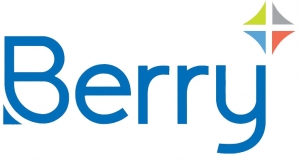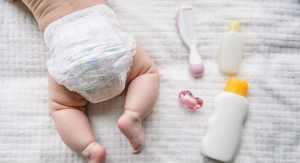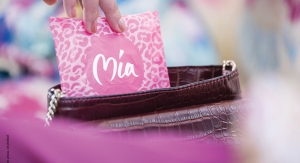Ian Bell, Head of Tissue and Hygiene Research, Euromonitor International02.18.14
The major story in nonwovens remains the hitherto explosive performance of the Chinese market, which continued to post reported double-digit growth of around 12% in 2013, with retail value sales topping $16 billion. China had already surpassed the U.S. to become the world’s largest single market in 2012, then overtook the wider North American market in 2013 and is now well placed to exceed the size of the entire Western European market in 2014.
Growth in nonwovens will continue to be dominated by China for the foreseeable future, buoyed by a heady mix of income growth, a still only moderate penetration rate for diapers and relaxation of the one-child policy, which could see an additional 40 million babies added to its population during the next five years. Given these very positive drivers and the likelihood that the incontinence category will also begin to pick up over the longer term, it is difficult to see the Chinese market not dominating global growth to 2030 and likely beyond.
While investment in new lines and distribution continues apace, there is some indication that the Chinese market is becoming more competitive, especially in its most developed cities, and so manufacturers will have to work harder to achieve their share of future growth. There is also the threat posed by the country’s rapidly developing retail channel, which will likely see the balance of power begin to shift to chained retailers. This is already a reality in the most developed cities, such as Shanghai and Beijing.
While it is almost impossible not to discuss China in any nonwovens review, the Asian region does have more to offer, with Southeast Asia in particular both demonstrating rapid growth and the development of trends, which will likely resurface elsewhere. In addition, the lessons learnt from doing business in some of the more challenging markets in the region may very well be applied to other markets, with India and sub-Saharan Africa very much longer-term targets for expansion.
Defining Southeast Asia
If we take Southeast Asia as a region in its own right including Indonesia, Laos, Malaysia, Myanmar, the Philippines, Singapore, Taiwan, Thailand and Vietnam, retail nonwoven value sales were worth some $3.8 billion at the start of 2014. This figure is around half the size of the Japanese market and roughly on par with the Russian market. More importantly, growth rates have been accelerating, from around 4% through to 2005 to double digits since 2010, and 12% in 2013, with little to suggest that these figures will slow anytime soon.
Predictably, much of this growth is being generated by the nappies/diapers category, boosted by a very youthful demographic profile and rising incomes across much of the region. Indonesia is a case in point, being the most populous country in the region and enjoying rapid economic development. In terms of retail nonwovens, the country is likely to break the $1 billion mark in 2014 and the $2 billion mark in 2018, which is a clear indication of how quickly the market is developing. But, Indonesia is not alone, with Vietnam, Cambodia and Laos all likely to see value sales double by 2018.
The rapid growth predicted for these standout markets and the region as a whole will largely be driven by rising disposable incomes. While sanitary protection is economically within the reach of most women across the region, incomes are developing to such an extent that diapers are also becoming accessible to many. In Indonesia, for example, per capita income currently stands at $2200, with this likely to increase to the key $4000 level, which should bring with it a rapid growth phase for diapers by around 2018.
An international melting pot
Invest now to take advantage of future development should be the mantra, and the region is rapidly heating up in terms of competition, with a broad mix of Western (Procter & Gamble, Kimberly- Clark), Asian (Unicharm, DSG) and local players (Softex, Ky Vy). With Kimberly-Clark and Procter & Gamble having developed a leading position in the region, SCA purchasing Taiwanese company Everbeauty in 2011 and Unicharm expanding its own position, most notably in Indonesia, the region is one of the most interesting in terms of the mix of products and companies currently operating.
In such a melting pot-type environment, there have been some very interesting trends developing, most notably in terms of format preference, which could well be evidence of a much broader Asian trend, which also has latent potential in the booming Chinese market. The key format trend in Southeast Asia over the past decade has been the popularity of the pull-up pants diaper format. Across the region, sales have either been growing rapidly or the format has pushed its way to ascendancy.
From a Western perspective, this is somewhat surprising given the association the category has with the elongation of the potty training period and therefore older children and bigger sizes, as well as the relatively premium position occupied by brands such as Huggies Pull-Ups, for example. In Asia Pacific, where potty training tends to last for a shorter time than is typically seen in the West, and incomes are frequently many times lower, the popularity of the pull-up format is perhaps a little difficult to fathom.
Japanese trends fall far from the tree
The trend in Southeast Asia has its origins in Japan, with domestic market leader Unicharm emerging as something of a pioneer in promoting pull-up pants suitable for lower age groups. For a market where the birth rate has been stubbornly low and has experienced four recessions since 1992, the diapers category has remained surprisingly buoyant since 2000, ultimately as a result of Unicharm’s approach to putting younger children in higher value pull-up diapers.
Pull-up pants appeal to Japanese consumers specifically due to Japanese mothers’ penchant for ‘total security’ from leakage, especially among crawlers, as well as their appreciation of the convenience when changing them in comparison to open-style products. While the target age group may differ, one similarity between pull-up pants in both East and West has been price point, with Unicharm turning the perceived age range classification associated with pull-up pants on its head and driving value against what has been a shrinking consumer base.
The story in Southeast Asia, and most notably in Indonesia, has been somewhat surprisingly similar, with Asian parents preferring the convenience and security offered by pull-ups, and while this would appear to be applicable to the middle-classes, pull-up pants have been brought before a much wider audience. Unicharm has managed to turn the income hierarchy associated with the product on its head.
While pull-up pants are very much associated with higher income levels, new technology has allowed for the production of smaller sizes at very reasonable prices, a combination which has seen Unicharm surpass the Pampers brand and local stalwart Softex to gain a 50% value share of the Indonesian market in 2013. This has been achieved following investment in a new plant and technology, which have seen the company very much lead the way in pull-up pant production technology, allowing it, through volumes, to cut prices and make smaller pull-ups attainable to lower-income families.
Southeast Asia a trendsetter?
While there has been more interest in pull-up pants across Southeast Asia, with Thailand and Vietnam also reporting rapid growth, the example of Indonesia and the applicability of what this writer (amongst others I’m sure) perceived as very Japanese trend and specific to the most developed markets is significant. Significant not only for diaper format but also to the competitive landscape across the region and perhaps further afield. The popularity of pull-ups would appear to be innate among Asian consumers and a category ripe for development in the Chinese market, where, to date, the format has been associated with higher income groups.
In China, the wider adoption of pull-up pants could well be a possibility, but also perhaps in Western Europe, a region where Huggies’ open-style diapers disappeared from retail shelves in most countries in 2013 but was survived by its Pull-Ups brand. The Indonesian example provides a very interesting alternative scenario where advertising and promotional spending and year-on-year feature development have taken a back seat to the development of new production capability.
Indeed, it is customary to look at China and Japan as two of the largest and arguably most advanced nonwoven markets in the world. However, sometimes more interesting stories can be found around the fringes of these two regional heavyweights when looking beyond value sales, with the application of new technology in a developing market context being a potential game changer in Asia and beyond.
Beyond diapers
Looking beyond diapers, the Southeast Asian region also offers some surprises in sanitary protection. Thailand shows that younger age groups have migrated rapidly to what can be considered a very modern mix of products, with pantyliners and ultra-thin formats the major categories, and which are continuing to exhibit very positive growth on the back of manufacturers’ willingness to develop a wide portfolio of products aimed at the wide range of income groups typically found in these developing markets.
The influence of emancipation should not be overlooked as women are increasingly seeking employment and are in control of their own incomes and expenditure. Thailand even boasts a female prime minister, although this may not last too long given the current turmoil making the international news. Nonetheless, female consumers are now making more of a show across the region as a whole and nonwoven players are apparently taking advantage of this undercurrent, as well they should given the close link between economic emancipation and hygiene products in general, and sanitary protection in particular.
A further interesting trend has been consumers’ approach to pricing. As the example from Thailand indicates, modernization and premiumization in sanitary protection have been born out of an underlying consideration that quality costs. While consumers have been happy to switch brands based on price promotion activity, this has typically been the case among consumers staying within the same quality bracket. This price/quality consideration has also driven much of the growth noted in diapers and the pull-up format, a trend, which continues to favor Western manufacturers, with brands such as Pampers and Kotex being seen as something of a badge of quality, a factor with which local manufacturers have struggled at times.
Local advantage and the advent of technology
Local manufacturers’ quite considerable advantage, however, is local knowledge and access to consumers through traditional retail channels, which continue to make up the lion’s share of the retail structure across the region. Indeed, the lack of development of chained retailers is the only major drawback for the nonwoven industry across the region as a whole. Small independent stores account for the vast majority of sales, a factor which has its own implications for brand owners as distribution is certainly more challenging and there is less control over their products.
That said, internet retail, and more specifically m-commerce, would appear to be the key retail channel for the future. With smartphone ownership increasing apace, consumer hunger for product information and the use of social media in the region would appear to be the right combination to support direct-to-consumer operations, which have proved popular in other Asian countries. South Korea is the best example, with some 40% of diaper sales accounted for by the internet. Although such high sales may be some way off in Southeast Asia, there is undoubtedly an opportunity to appeal directly to consumers in this way and circumvent some of the vagaries of a still developing retail environment.
While the opportunity for m-commerce in Southeast Asia might seem slightly ahead of its time, what might be classed as the standard development path of hygiene products in the region is unlikely to be relevant. The popularity of disposable pants is a great example of consumers in this region being open to new ideas and ways of doing things if manufacturers can meet their key criterion of quality at the right price.
Growth in nonwovens will continue to be dominated by China for the foreseeable future, buoyed by a heady mix of income growth, a still only moderate penetration rate for diapers and relaxation of the one-child policy, which could see an additional 40 million babies added to its population during the next five years. Given these very positive drivers and the likelihood that the incontinence category will also begin to pick up over the longer term, it is difficult to see the Chinese market not dominating global growth to 2030 and likely beyond.
While investment in new lines and distribution continues apace, there is some indication that the Chinese market is becoming more competitive, especially in its most developed cities, and so manufacturers will have to work harder to achieve their share of future growth. There is also the threat posed by the country’s rapidly developing retail channel, which will likely see the balance of power begin to shift to chained retailers. This is already a reality in the most developed cities, such as Shanghai and Beijing.
While it is almost impossible not to discuss China in any nonwovens review, the Asian region does have more to offer, with Southeast Asia in particular both demonstrating rapid growth and the development of trends, which will likely resurface elsewhere. In addition, the lessons learnt from doing business in some of the more challenging markets in the region may very well be applied to other markets, with India and sub-Saharan Africa very much longer-term targets for expansion.
Defining Southeast Asia
If we take Southeast Asia as a region in its own right including Indonesia, Laos, Malaysia, Myanmar, the Philippines, Singapore, Taiwan, Thailand and Vietnam, retail nonwoven value sales were worth some $3.8 billion at the start of 2014. This figure is around half the size of the Japanese market and roughly on par with the Russian market. More importantly, growth rates have been accelerating, from around 4% through to 2005 to double digits since 2010, and 12% in 2013, with little to suggest that these figures will slow anytime soon.
Predictably, much of this growth is being generated by the nappies/diapers category, boosted by a very youthful demographic profile and rising incomes across much of the region. Indonesia is a case in point, being the most populous country in the region and enjoying rapid economic development. In terms of retail nonwovens, the country is likely to break the $1 billion mark in 2014 and the $2 billion mark in 2018, which is a clear indication of how quickly the market is developing. But, Indonesia is not alone, with Vietnam, Cambodia and Laos all likely to see value sales double by 2018.
The rapid growth predicted for these standout markets and the region as a whole will largely be driven by rising disposable incomes. While sanitary protection is economically within the reach of most women across the region, incomes are developing to such an extent that diapers are also becoming accessible to many. In Indonesia, for example, per capita income currently stands at $2200, with this likely to increase to the key $4000 level, which should bring with it a rapid growth phase for diapers by around 2018.
An international melting pot
Invest now to take advantage of future development should be the mantra, and the region is rapidly heating up in terms of competition, with a broad mix of Western (Procter & Gamble, Kimberly- Clark), Asian (Unicharm, DSG) and local players (Softex, Ky Vy). With Kimberly-Clark and Procter & Gamble having developed a leading position in the region, SCA purchasing Taiwanese company Everbeauty in 2011 and Unicharm expanding its own position, most notably in Indonesia, the region is one of the most interesting in terms of the mix of products and companies currently operating.
In such a melting pot-type environment, there have been some very interesting trends developing, most notably in terms of format preference, which could well be evidence of a much broader Asian trend, which also has latent potential in the booming Chinese market. The key format trend in Southeast Asia over the past decade has been the popularity of the pull-up pants diaper format. Across the region, sales have either been growing rapidly or the format has pushed its way to ascendancy.
From a Western perspective, this is somewhat surprising given the association the category has with the elongation of the potty training period and therefore older children and bigger sizes, as well as the relatively premium position occupied by brands such as Huggies Pull-Ups, for example. In Asia Pacific, where potty training tends to last for a shorter time than is typically seen in the West, and incomes are frequently many times lower, the popularity of the pull-up format is perhaps a little difficult to fathom.
Japanese trends fall far from the tree
The trend in Southeast Asia has its origins in Japan, with domestic market leader Unicharm emerging as something of a pioneer in promoting pull-up pants suitable for lower age groups. For a market where the birth rate has been stubbornly low and has experienced four recessions since 1992, the diapers category has remained surprisingly buoyant since 2000, ultimately as a result of Unicharm’s approach to putting younger children in higher value pull-up diapers.
Pull-up pants appeal to Japanese consumers specifically due to Japanese mothers’ penchant for ‘total security’ from leakage, especially among crawlers, as well as their appreciation of the convenience when changing them in comparison to open-style products. While the target age group may differ, one similarity between pull-up pants in both East and West has been price point, with Unicharm turning the perceived age range classification associated with pull-up pants on its head and driving value against what has been a shrinking consumer base.
The story in Southeast Asia, and most notably in Indonesia, has been somewhat surprisingly similar, with Asian parents preferring the convenience and security offered by pull-ups, and while this would appear to be applicable to the middle-classes, pull-up pants have been brought before a much wider audience. Unicharm has managed to turn the income hierarchy associated with the product on its head.
While pull-up pants are very much associated with higher income levels, new technology has allowed for the production of smaller sizes at very reasonable prices, a combination which has seen Unicharm surpass the Pampers brand and local stalwart Softex to gain a 50% value share of the Indonesian market in 2013. This has been achieved following investment in a new plant and technology, which have seen the company very much lead the way in pull-up pant production technology, allowing it, through volumes, to cut prices and make smaller pull-ups attainable to lower-income families.
Southeast Asia a trendsetter?
While there has been more interest in pull-up pants across Southeast Asia, with Thailand and Vietnam also reporting rapid growth, the example of Indonesia and the applicability of what this writer (amongst others I’m sure) perceived as very Japanese trend and specific to the most developed markets is significant. Significant not only for diaper format but also to the competitive landscape across the region and perhaps further afield. The popularity of pull-ups would appear to be innate among Asian consumers and a category ripe for development in the Chinese market, where, to date, the format has been associated with higher income groups.
In China, the wider adoption of pull-up pants could well be a possibility, but also perhaps in Western Europe, a region where Huggies’ open-style diapers disappeared from retail shelves in most countries in 2013 but was survived by its Pull-Ups brand. The Indonesian example provides a very interesting alternative scenario where advertising and promotional spending and year-on-year feature development have taken a back seat to the development of new production capability.
Indeed, it is customary to look at China and Japan as two of the largest and arguably most advanced nonwoven markets in the world. However, sometimes more interesting stories can be found around the fringes of these two regional heavyweights when looking beyond value sales, with the application of new technology in a developing market context being a potential game changer in Asia and beyond.
Beyond diapers
Looking beyond diapers, the Southeast Asian region also offers some surprises in sanitary protection. Thailand shows that younger age groups have migrated rapidly to what can be considered a very modern mix of products, with pantyliners and ultra-thin formats the major categories, and which are continuing to exhibit very positive growth on the back of manufacturers’ willingness to develop a wide portfolio of products aimed at the wide range of income groups typically found in these developing markets.
The influence of emancipation should not be overlooked as women are increasingly seeking employment and are in control of their own incomes and expenditure. Thailand even boasts a female prime minister, although this may not last too long given the current turmoil making the international news. Nonetheless, female consumers are now making more of a show across the region as a whole and nonwoven players are apparently taking advantage of this undercurrent, as well they should given the close link between economic emancipation and hygiene products in general, and sanitary protection in particular.
A further interesting trend has been consumers’ approach to pricing. As the example from Thailand indicates, modernization and premiumization in sanitary protection have been born out of an underlying consideration that quality costs. While consumers have been happy to switch brands based on price promotion activity, this has typically been the case among consumers staying within the same quality bracket. This price/quality consideration has also driven much of the growth noted in diapers and the pull-up format, a trend, which continues to favor Western manufacturers, with brands such as Pampers and Kotex being seen as something of a badge of quality, a factor with which local manufacturers have struggled at times.
Local advantage and the advent of technology
Local manufacturers’ quite considerable advantage, however, is local knowledge and access to consumers through traditional retail channels, which continue to make up the lion’s share of the retail structure across the region. Indeed, the lack of development of chained retailers is the only major drawback for the nonwoven industry across the region as a whole. Small independent stores account for the vast majority of sales, a factor which has its own implications for brand owners as distribution is certainly more challenging and there is less control over their products.
That said, internet retail, and more specifically m-commerce, would appear to be the key retail channel for the future. With smartphone ownership increasing apace, consumer hunger for product information and the use of social media in the region would appear to be the right combination to support direct-to-consumer operations, which have proved popular in other Asian countries. South Korea is the best example, with some 40% of diaper sales accounted for by the internet. Although such high sales may be some way off in Southeast Asia, there is undoubtedly an opportunity to appeal directly to consumers in this way and circumvent some of the vagaries of a still developing retail environment.
While the opportunity for m-commerce in Southeast Asia might seem slightly ahead of its time, what might be classed as the standard development path of hygiene products in the region is unlikely to be relevant. The popularity of disposable pants is a great example of consumers in this region being open to new ideas and ways of doing things if manufacturers can meet their key criterion of quality at the right price.








